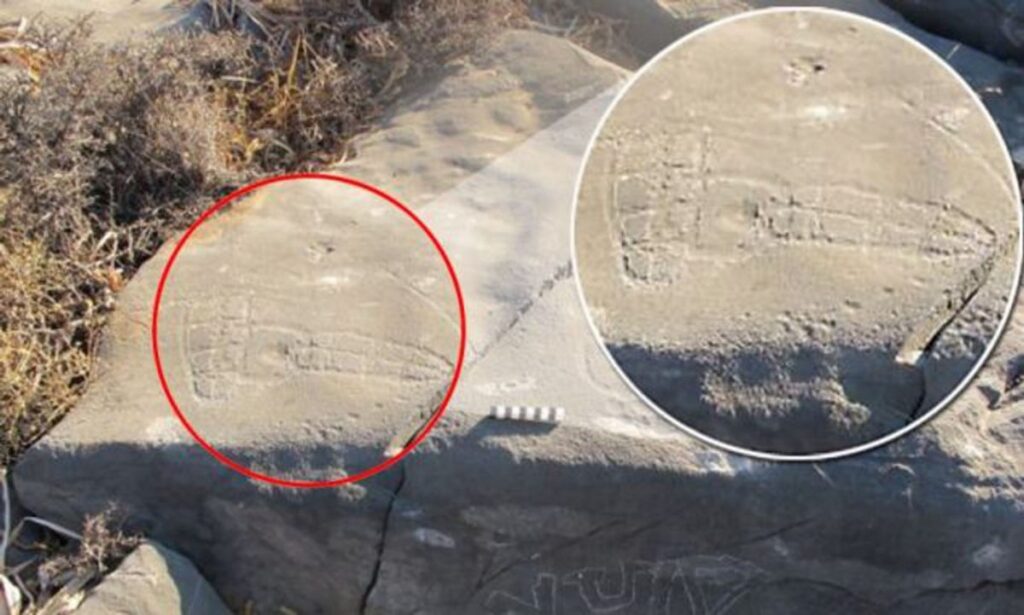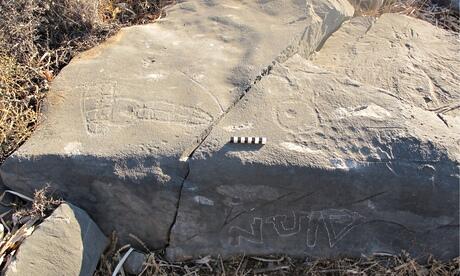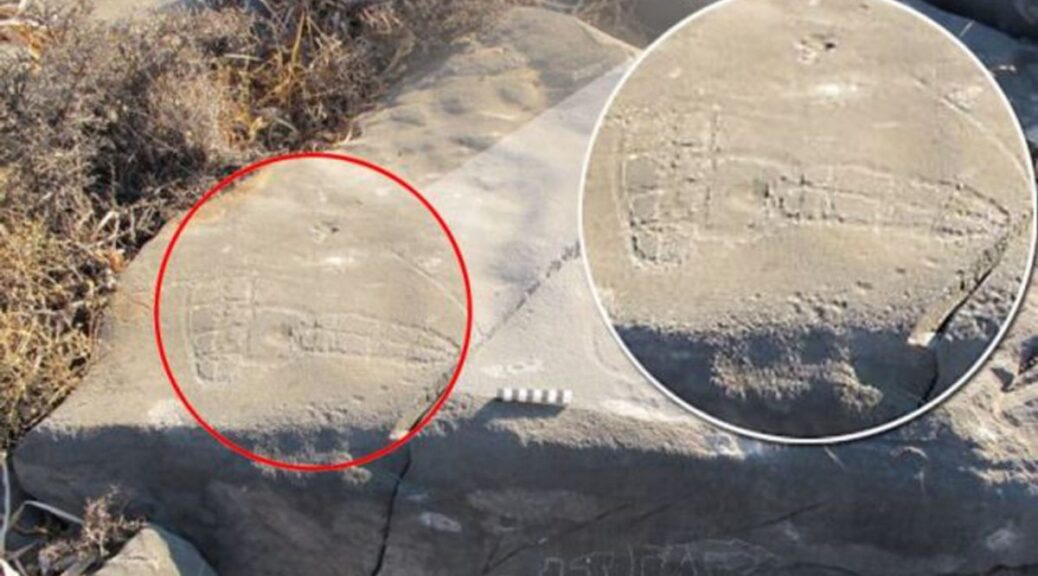“Nikasitimos Was Here Mounting Timiona,” 2,500-year-old erotic graffiti on Astypalaia, Greece

In 2014, an archaeologist working on Astypalaia, a remote Greek island of the Dodecanese discovered one of the world’s oldest erotic graffiti a pair of phallus carvings dating from the 5th century BCE and a proclamation of sexual conquest from the 6th century BCE.
Archaeologists believe it is the oldest record of erotic graffiti ever found, with inscriptions and etchings documenting an ongoing sexual relationship between two men in Ancient Greece.
Professor Dr. Andreas Vlachopoulos discovered the two carved penises while he was giving his students a tour of the island. They were found etched into a limestone outcropping on the island’s windswept, rugged peninsula overlooking Vathay Bay.
In an interview with The Guardian, Professor Andreas Vlachopoulos, a specialist in prehistoric archaeology was surprised to find such sophisticated inscriptions in such an unlikely place. He called the inscriptions “monumental in scale”.
“They claimed their own space in large letters that not only expressed sexual desire but talked about the act of sex itself,” he told the Guardian. “And that is very, very rare.”

Even though sexual relations between men were not taboo in ancient Greece, these racy inscriptions and phalluses carved into Astypalaia’s rocky peninsula shed light on the very private lives of ancient Greece.
Carved on the side of the rock, archeologists found the name “DION” (ΔΙΩΝ). There was another inscription which was found 52 meters above sea level. “Nikasitimos was here mounting Timiona” (Νικασίτιμος οἶφε Τιμίονα), noted the inscription.
In addition to illuminating the intimate lives of the ancients, the graffiti demonstrated the degree of literacy at a period before the construction of the Acropolis in Athens.
The graffiti is written in the Greek alphabet, which was first developed in the 8th century BCE. It is written in a style known as “rustic,” which was popular in the sixth and fifth centuries BCE.
The letters have been expertly carved into the rock, demonstrating that regular island residents were also trained in the art of writing, in addition to philosophers, academics, and historians.
Remarkably, the erotic rock carvings have survived despite remaining exposed all these millennia to weather and erosion from the sea.
